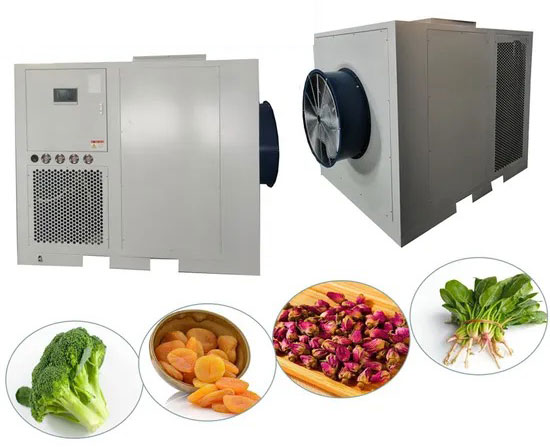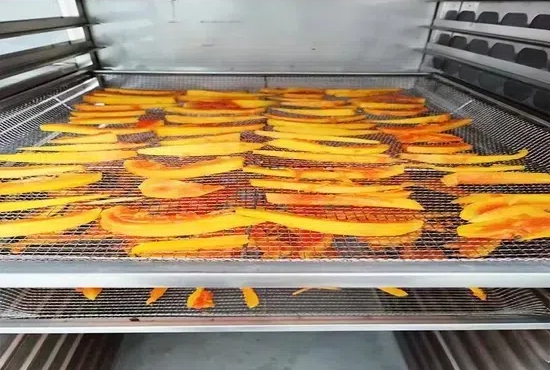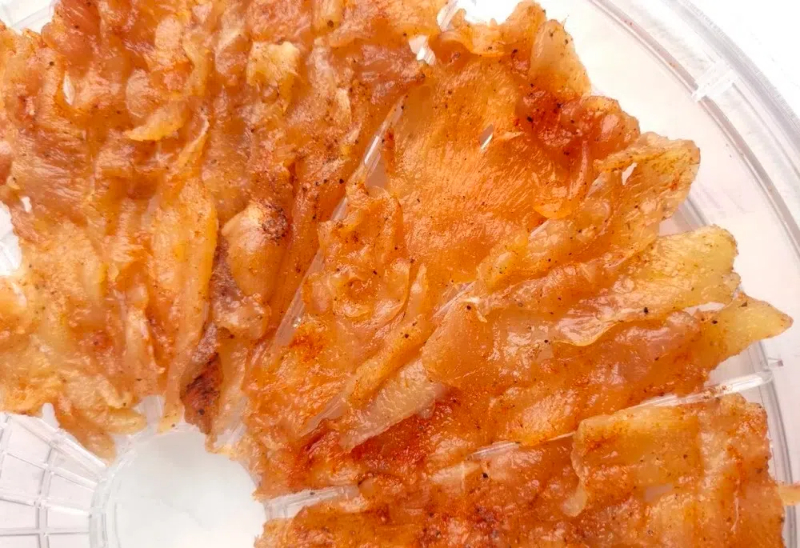
Content Menu
● How Does a Food Dehydrator Work?
● Benefits of Using a Food Dehydrator
● Types of Food Dehydrators
● How to Use a Food Dehydrator
● Popular Foods to Dehydrate
● Recipes to Try
● Best Practices for Successful Dehydration
● Conclusion
● FAQs
>> 1. How long does it take to dehydrate food?
>> 2. Can I dehydrate cooked foods?
>> 3. What temperature should I use for different foods?
>> 4. How do I store dehydrated foods?
>> 5. Can I use a dehydrator for making jerky?
● Citations:
Food dehydration is a method of preserving food by removing its moisture content, thereby extending its shelf life and enhancing its flavor. A food dehydrator is an appliance specifically designed to facilitate this process, making it easier and more efficient than traditional methods like sun drying or air drying. In this article, we will explore the workings of food dehydrators, their benefits, types, and practical applications, along with some tips and recipes for using them effectively.

How Does a Food Dehydrator Work?
A food dehydrator operates by circulating warm air around food items at low temperatures. This process involves several key components:
- Heating Element: It generates heat to warm the air inside the dehydrator.
- Fan: The fan circulates the warm air evenly across all trays, ensuring consistent drying.
- Trays: Food is placed on perforated trays that allow air to flow freely around the items.
The dehydrator typically operates at temperatures ranging from 90°F to 160°F (32°C to 71°C), depending on the type of food being dried. The heat evaporates moisture from the food, which is then expelled through vents in the machine. This method preserves the food without cooking it, maintaining its nutritional value and flavor.
Benefits of Using a Food Dehydrator
1. Extended Shelf Life: Dehydrating food significantly increases its shelf life by inhibiting the growth of bacteria, yeasts, and molds that require moisture to thrive.
2. Nutrient Retention: Unlike other preservation methods that may destroy vitamins and minerals, dehydration helps retain essential nutrients in fruits and vegetables.
3. Cost-Effective: Making your own dried snacks at home can be much cheaper than purchasing pre-packaged products. You can buy fresh produce in bulk when it's in season and dehydrate it for later use.
4. Healthy Snacks: Dried fruits and vegetables make for nutritious snacks without added preservatives or sugars found in many commercial snacks.
5. Versatility: Dehydrators can be used for a wide range of foods including fruits, vegetables, meats (for jerky), herbs, and even flowers for teas or garnishes.
6. Space Saving: Dried foods take up less space compared to their fresh counterparts, making it easier to store them in your pantry.
7. Flavor Concentration: The dehydration process intensifies the flavors of foods, making them more enjoyable. For example, dried fruits often taste sweeter than their fresh versions.
8. Eco-Friendly: By reducing food waste through preservation, dehydrators contribute to a more sustainable kitchen practice.
9. Preparation for Cooking: Dried foods can be rehydrated for cooking, adding a new dimension to your culinary repertoire. You can prepare soups, stews, and other dishes with dried ingredients, making meal preparation more efficient and flavorful.
10. Convenience: With a dehydrator at home, you can easily preserve excess produce from your garden or local market without needing special equipment or techniques.
Types of Food Dehydrators
Food dehydrators come in various designs suited for different needs:
- Stackable Dehydrators: These models feature multiple trays stacked on top of each other with a heating element located at the base or top. They are usually more affordable but may require rotating trays for even drying.
- Horizontal Airflow Dehydrators: These have a fan and heating element located at the back or side of the unit. They provide more consistent drying as air circulates evenly across all trays without needing rotation.
- Commercial Dehydrators: Designed for large-scale operations, these machines can handle bigger batches and often come with advanced features like programmable settings and higher capacities.

How to Use a Food Dehydrator
Using a food dehydrator is straightforward:
1. Prepare Your Food: Wash and cut your fruits or vegetables into uniform sizes to ensure even drying. For meats, marinate if desired before slicing thinly.
2. Arrange on Trays: Place the prepared food on the dehydrator trays without overlapping pieces to allow proper airflow.
3. Set Temperature and Time: Adjust the temperature based on the type of food (e.g., fruits at 135°F/57°C, vegetables at 125°F/52°C). Most dehydration processes take several hours; check periodically for doneness.
4. Store Properly: Once dried, store your dehydrated foods in airtight containers or vacuum-sealed bags to maintain freshness.
Popular Foods to Dehydrate
You can dehydrate almost any type of food; however, here are some popular choices:
- Fruits: Apples, bananas, strawberries, mangoes
- Vegetables: Tomatoes, carrots, bell peppers
- Meats: Beef jerky (ensure it reaches safe internal temperatures)
- Herbs: Basil, oregano
- Snacks: Fruit leathers made from pureed fruits
Recipes to Try
Here are a few simple recipes you can try using your food dehydrator:
1. Dried Apple Chips
- Slice apples thinly.
- Sprinkle with cinnamon if desired.
- Dehydrate at 135°F (57°C) for 6-8 hours until crispy.
2. Vegetable Chips
- Thinly slice vegetables like zucchini or sweet potatoes.
- Toss with olive oil and seasoning.
- Dehydrate at 125°F (52°C) for 8-10 hours until crispy.
3. Beef Jerky
- Marinate thinly sliced beef in your favorite marinade.
- Dehydrate at 160°F (71°C) until dry but still pliable (4-6 hours).
4. Fruit Leather
- Blend fruit into a smooth puree.
- Spread evenly on a non-stick sheet.
- Dehydrate at 135°F (57°C) for 6-8 hours until no longer sticky.
5. Herb Drying
- Wash and dry fresh herbs.
- Place on trays without overlapping.
- Dehydrate at 95°F (35°C) until brittle (2-4 hours).
Best Practices for Successful Dehydration
To achieve optimal results when using a food dehydrator:
- Always start with fresh ingredients; overripe or damaged produce may not dehydrate well.
- Cut foods into uniform sizes; this ensures consistent drying times across all pieces.
- Pre-treat certain fruits like apples or pears with lemon juice to prevent browning during dehydration.
- Avoid overcrowding trays; leaving space allows air circulation which is key for even drying.
- Monitor moisture levels; check periodically during dehydration to avoid over-drying or under-drying foods.
- Store dried foods properly in airtight containers away from light and heat sources to maximize shelf life.
Conclusion
Food dehydrators are invaluable tools for anyone looking to preserve their favorite foods while maximizing nutritional value and minimizing waste. By understanding how they work and experimenting with different foods and recipes, you can enjoy delicious snacks year-round while saving money and contributing to a more sustainable kitchen practice.

FAQs
1. How long does it take to dehydrate food?
Dehydration times vary based on the type of food being dried and its moisture content. Generally, most foods take between 4 to 12 hours to dehydrate fully.
2. Can I dehydrate cooked foods?
Yes! Cooked foods can be dehydrated effectively; just ensure they are cooled down before placing them in the dehydrator.
3. What temperature should I use for different foods?
Fruits are typically dried at around 135°F (57°C), vegetables at about 125°F (52°C), herbs at lower temperatures around 95°F (35°C), while meats should be pre-cooked and then dehydrated at higher temperatures around 160°F (71°C).
4. How do I store dehydrated foods?
Store dried foods in airtight containers or vacuum-sealed bags in a cool, dark place to maintain freshness for longer periods.
5. Can I use a dehydrator for making jerky?
Absolutely! A food dehydrator is ideal for making jerky as it allows you to control temperature effectively while ensuring moisture is removed safely from meat products.
Citations:
[1] https://etsolutions.in/10-amazing-benefits-of-electrical-food-dehydrator-machines/
[2] https://www.youtube.com/watch?v=lEUA2t2XD5M
[3] https://www.rei.com/learn/expert-advice/how-to-dehydrate-food.html
[4] https://theinspiredhome.com/articles/a-beginners-gdeletee-to-dehydrating-food/
[5] https://basecampfood.com/blogs/news/7-benefits-of-dehydrated-camping-food-you-should-know
[6] https://www.webstaurantstore.com/guide/741/food-dehydrators-buying-guide.html
[7] https://www.osbheatpump.com/news/how-to-use-a-food-dehydrator-10-useful-tips-for-beginners-and-advanced-users/
[8] https://www.backpackingchef.com/dehydrating-food.html
[9] https://www.commercialdehydrators.com.au/dehydrating-recipes-filters
[10] https://www.bestbuy.com/discover-learn/10-reasons-to-buy-a-food-dehydrator/pcmcat1634332391134
[11] https://blog.rootsandharvest.com/best-practices-of-dehydration/
[12] https://www.youtube.com/watch?v=rXNIHzcE8F0
[13] https://coalatree.com/blogs/news/h1-span-style-font-weight-400-exploring-the-benefits-of-dehydrated-foods-for-outdoor-enthusiasts
[14] https://www.webmd.com/diet/dehydrating-food-good-for-you
[15] https://homesteadingfamily.com/preservation-101-intro-to-dehydrating-food/
[16] https://www.dehydratorsamerica.com/post/best-practice-for-drying-fruit-and-vegetables-commercial-dehydrators
[17] https://eatsleepwild.com/homemade-dehydrated-backpacking-meals/
[18] https://www.theseasonalhomestead.com/9-benefits-of-dehydrating-food-that-may-surprise-you/
[19] https://www.goodhousekeeping.com/appliances/a31904157/what-is-a-dehydrator/
[20] https://learn.eartheasy.com/guides/a-beginners-guide-to-dehydrating-food/
[21] https://www.backpackingchef.com/food-dehydrator-recipes.html
[22] https://silva-intl.com/blog/dried-and-delicious-the-health-benefits-of-dehydrated-foods
[23] https://brodandtaylor.com/pages/dehydrating
[24] https://www.breville.com/content/breville/us/en/blog/cooking/how-to-use-a-dehydrator/_jcr_content/root/container_741553154/container/image.coreimg.85.1200.jpeg/1718622778417/how-to-use-dehydrator.jpeg?sa=X&ved=2ahUKEwjEyeuUjeqKAxXRUkEAHaLQIYcQ_B16BAgEEAI
[25] https://insanelygoodrecipes.com/dehydrator-recipes/
[26] https://www.healthline.com/nutrition/dehydrated-food
[27] https://www.allrecipes.com/article/how-to-use-a-food-dehydrator/
[28] https://www.youtube.com/playlist?list=PL6ygl2lNPriODiu2XahnHHUhj6mEObz0P
[29] https://community.waring.com/blog/p/13or1/the-remarkable-benefits-of-adding-a-food-dehydrator-to-your-kitchen-arsenal
[30] https://www.sunbeam.com.au/recipes/dehydrator-recipes
[31] https://www.kencko.com/blog/the-goods/does-dehydrated-food-and-vegetables-lose-nutritional-value
[32] https://www.freshoffthegrid.com/dehydrating-food/











